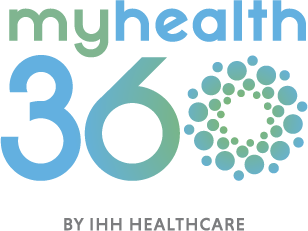Respiratory medicine is a specialty that deals with the diagnosis and treatment of the respiratory system, which includes the nose, throat, trachea, larynx, lungs, and diaphragm.
A chest infection is an illness that affects the lungs or large airways (bronchi). It can be caused by bacteria, viruses, or fungi. Some chest infections are mild and resolve on their own, while others can be serious and potentially life-threatening.
What are the common respiratory conditions?
Asthma affects all age groups but usually starts in childhood. It is characterised by the inflammation of the airways causing narrowing and reduction of airflow to the lungs.
Symptoms include:
- Wheezing (whistling sound when breathing)
- Coughing
- Breathlessness
- Chest tightness
Occasionally, the symptoms can worsen temporarily. This is referred to as an asthma attack.
Bronchitis occurs when the bronchi, the major tubes that carry air to the lungs, become swollen and irritated.
Types of bronchitis:
Acute bronchitis:
- Sudden onset and last for less than 3 weeks
- Usually occurs with a viral infection of the upper airways
- Common symptoms: Cough with or without phlegm, fatigue, sore throat
Chronic bronchitis:
- Long-standing
- Usually, due to smoking
- Prone to lung infections
- Symptoms last for at least 3 months a year for 2 years consecutively
- Common symptoms: Persistent cough with a lot of phlegm, wheezing, chest tightness, shortness of breath
Bronchiectasis is a condition in which the airways of the lungs become dilated, resulting in a build-up of excess mucous that makes the lungs more susceptible to infection.
Symptoms include:
- Persistent cough with phlegm
- Wheezing
- Shortness of breath
- Coughing up blood
Cough that lasts eight weeks or more is typically considered a chronic cough. Causes of chronic cough include postnasal drip, asthma, acid reflux, respiratory tract infection, chronic bronchitis, lung cancer, and bronchiectasis.
COPD is a set of disorders that causes airflow obstruction and breathing difficulties. They are emphysema and chronic bronchitis. It is a common condition that primarily affects older and middle-aged adults who smoke.
Symptoms include:
- Persistent cough with phlegm
- Breathlessness
- Wheezing
- Inability to take a deep breath
Lung cancer is a disease in which there is an uncontrolled growth of cells in the lung. Lung cancer begins in the lungs or airways (trachea and bronchus) and may spread to the lymph nodes or other organs.
Symptoms include:
- Persistent cough for more than 2-3 weeks
- Chronic cough that worsens
- Haemoptysis (coughing up blood)
- Pain or ache when coughing or breathing
- Wheezing
- Breathlessness
- Persistent shoulder or neck pain
- Unexplained weight loss
- Loss of appetite
- Hoarseness of voice
- Fatigue
- Odynophagia (pain when swallowing)
- Dysphagia (difficulty swallowing)
Lung diseases that are caused by repeated and long-term exposure to specific irritants in the work environments. Due to the nature of their location, employment, and environment, some occupations are at a greater risk for occupational lung diseases than others.
Symptoms include:
- Cough
- Chest tightness
- Shortness of breath
- Wheezing
- Abnormal breathing pattern
Pneumonia is an infection that affects one or both lungs. It causes fluid or pus to fill the air sacs of the lungs. The severity of the condition depends on your age, overall health, and the cause of infection (virus or bacteria).
Symptoms include:
- Cough with or without phlegm that is yellow, green, brown, or blood-stained
- Difficulty breathing
- Chest pain that worsens when you breathe or cough
- Fever
Tuberculosis (TB) is a bacterial infection transmitted by inhaling minute droplets from the sneezes or coughs of an infected individual. It primarily affects the lungs but can affect any part of the body.
Symptoms include:
- Persistent cough for more than 3 weeks
- Night sweats
- Weight loss
- Tiredness
- Fever
- Loss of appetite
How are respiratory conditions diagnosed?
Diagnosis is made based on various investigations. Your doctor will first evaluate your medical history and symptoms before conducting a physical examination.
Tests that may be requested:
- Imaging tests: X-rays, computed tomography (CT) scan, magnetic resonance imaging (MRI)
- Lung function tests: spirometry, lung volume (body plethysmography) test
- Bronchoscopy
- Blood tests
- Sputum culture
How are respiratory conditions treated?
The treatment options differ according to the types of respiratory conditions.
Treatment options include:
- Lifestyle changes
- Medications
- Oxygen therapy
- Minimally invasive procedures
- Surgery
Speak to your doctor if you or your loved ones have symptoms of respiratory conditions. The caring team of healthcare professionals are available for consultation and to provide the best care. Get in touch with us to book an appointment today. We assure you the best possible care tailored to your specific needs.


 Request an Appointment
Request an Appointment.webp?sfvrsn=276ce14_1/vector-(3).webp) International Patient
International Patient

.webp)


 Find A Doctor
Find A Doctor




.webp?sfvrsn=20763f7d_21)
.webp?sfvrsn=f2a2c343_12)





